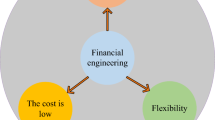Abstract
Excellent human resource management can lead to the benign development of enterprises. This paper briefly introduces the application of back-propagation (BP) neural networks for human resource demand prediction in order to facilitate the structural optimization of human resources. The traditional BP neural network was improved using the particle swarm optimization algorithm. An analysis was carried out on an electric power company (company X) in Zhengzhou City, Henan province. The optimal node number and the type of the activation function in the hidden layer of the improved BP neural network were determined by an orthogonal comparison test. The results showed that the optimal number of nodes in the hidden layer of the improved BP neural network was 15, and the activation function was sigmoid. The multiple regression analysis method and the traditional BP neural network were compared with the improved BP neural network. The errors of the multiple regression analysis method in predicting the demand of 2018, 2019 and 2020 were 1.24%, 1.68% and 1.89%, respectively; the corresponding errors of the traditional BP neural network were 0.51%, 0.63% and 0.74%, respectively; the corresponding errors of the improved BP neural network were 0%, 0.10% and 0.10%, respectively. The prediction error of the improved BP neural network was the smallest in the workforce demand prediction of the same department.




Similar content being viewed by others
References
N. Zhou, H. Lu, H. Zhao, F.J. Li, M.H. Yang, Midwifery service and midwifery human resource demand in western China: a cross-sectional study. Lancet 394, S34 (2019)
M.J. Fila, J. Purl, R.W. Griffeth, Job demands, control and support: Meta-analyzing moderator effects of gender, nationality, and occupation. Hum. Resour. Manage R. 27(1), 39–60 (2016)
S. Rafiei, R. Mohebbifar, F. Hashemi, M.R. Ezzatabadi, F. Farzianpour, Approaches in Health Human Resource Forecasting: A Roadmap for Improvement. Electron. Phys. 8(9), 2911–2917 (2016)
A. Fini, A. Akbarnezhad, T.H. Rashidi, S.T. Waller, Job Assignment Based on Brain Demands and Human Resource Strategies. J. Constr. Eng. M. 143(5), 04016123 (2017)
Y. Zhao, W. Zhang, D. Liu, F. Bao, L. Tian, Service implementation in manufacturing firms: The role of service-orientated human resource management practices and demand-side search. Manage Decis. 55(4), 648–661 (2017)
V. Karina, M.V. Veldhoven, M. Veld, Connecting empowerment-focused HRM and labour productivity to work engagement: the mediating role of job demands and resources. Hum. Resour. Manag. J. 26(2), 192–210 (2016)
S. Mastracci, Human Resource Management Practices to Support Emotional Labor in Emergency Response. J. Homel. Secur. Emerg. 12(4) (2015)
S. Shan, Z. Hu, Z. Liu, J. Shi, L. Wang, Z.M. Bi, An adaptive genetic algorithm for demand-driven and resource-constrained project scheduling in aircraft assembly. Inform. Technol. Manag. 18(1), 41–53 (2017)
Z. Liu, Y. Ma, H. Zheng, D. Liu, J. Liu, Human resource recommendation algorithm based on improved frequent itemset mining. Future Gener. Comp. Syst. 126(1), 284–288 (2021)
X. Liang, C. Xu, X. Shen, J. Yang, S. Liu, J. Tang, L. Lin, S. Yan, Human Parsing with Contextualized Convolutional Neural Network. IEEE T. Pattern Anal. 39(1), 115–127 (2016)
M.B. Milovanović, D.S. Anti, M.N. Rajić, P. Milosavljevic, A. Pavlovic, C. Fragassa, Wood resource management using an endocrine NARX neural network. Eur. J. Wood Wood Prod. 76(6), 1–11 (2017)
Y. Zhou, S. Li, BP neural network modeling with sensitivity analysis on monotonicity based Spearman coefficient. Chemometr. Intell. Lab. Syst. 200, 103977 (2020)
S. Li, Z.Q. Liu, A.B. Chan, Heterogeneous Multi-task Learning for Human Pose Estimation with Deep Convolutional Neural Network. Int. J. Comput. Vision 113(1), 19–36 (2015)
F.G. Debele, M. Meo, D. Renga, M. Ricca, Y. Zhang, Designing resource-on-demand strategies for Dense WLANs. IEEE J. Sel. Area. Comm. 33(12), 2494–2509 (2015)
F. Corno, L. De Russis, A. Marcelli, T. Montanaro, An Unsupervised and Noninvasive Model for Predicting Network Resource Demands. IEEE Internet Things 5(6), 4342–4350 (2018)
Funding
The authors have not disclosed any funding.
Author information
Authors and Affiliations
Corresponding author
Ethics declarations
Conflict of interest
The authors have not disclosed any competing interest.
Additional information
Publisher's Note
Springer Nature remains neutral with regard to jurisdictional claims in published maps and institutional affiliations.
Rights and permissions
About this article
Cite this article
Fan, C. Research on the Structural Optimization of the Data Mining-Based Enterprise Human Resource Management. J. Inst. Eng. India Ser. C 103, 931–938 (2022). https://doi.org/10.1007/s40032-022-00838-4
Received:
Accepted:
Published:
Issue Date:
DOI: https://doi.org/10.1007/s40032-022-00838-4




